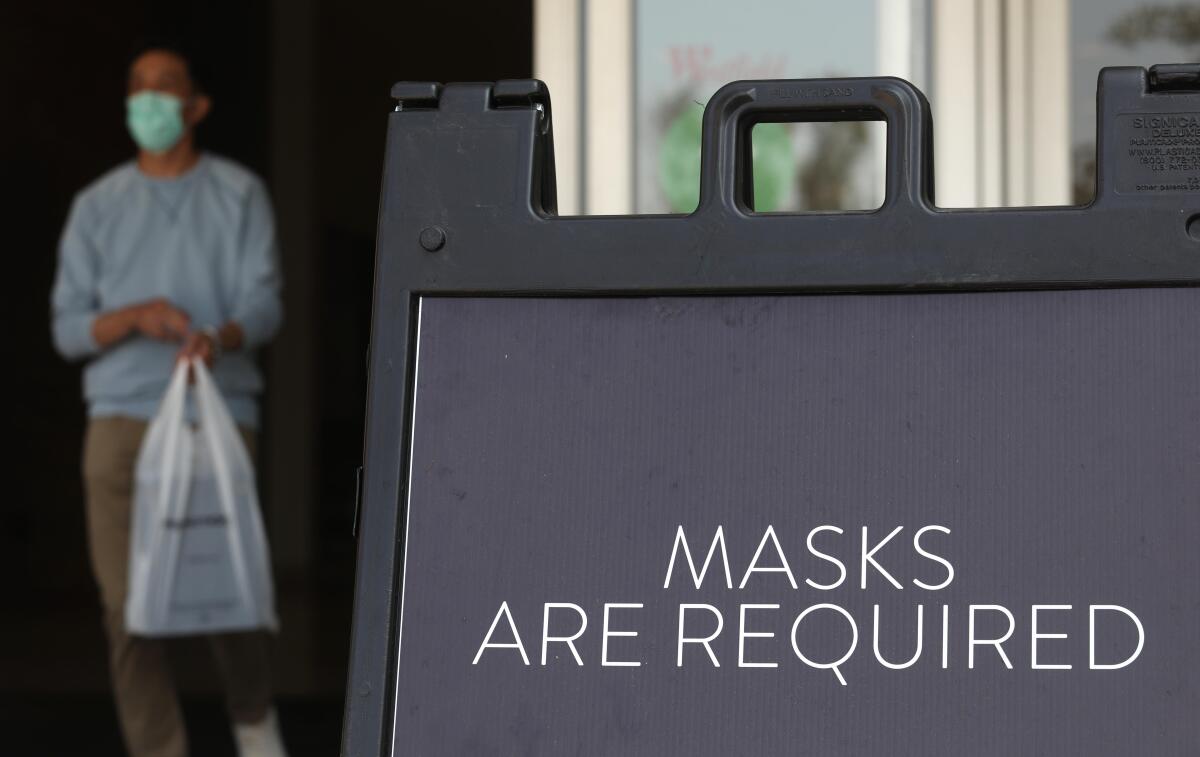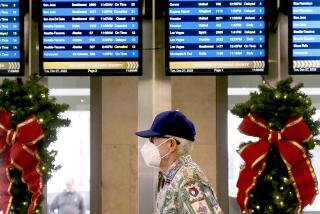Coronavirus numbers are rising again in some parts of California, but it’s too early to call it a new surge

- Share via
The uptick in coronavirus cases in Los Angeles and several other California counties is cause for concern, but experts said Thursday that it’s too early to say whether it represents the start of a larger surge in infections.
The next few weeks will be crucial in seeing whether California can keep case numbers and hospitalizations down even as officials continue to reopen the economy. The state is hoping its new tier system will avoid the surge in cases that came this summer when the state rapidly allowed businesses to reopen and people returned to old habits.
“I think there’s probably bound to be a few more upticks when counties reopen because of the fact that you’re now going to be in situations where there is more opportunity for exposures,” said Dr. Robert Kim-Farley, a medical epidemiologist and infectious disease expert at UCLA Fielding School of Public Health.
Los Angeles County on Wednesday reported its highest daily case count in six weeks. Riverside County is on the brink of regression from Tier 2 to Tier 1 after its daily case count increased, and in San Diego, which also remains in Tier 2, hospitalizations have increased over the last two weeks after a surge in cases linked largely to San Diego State.
Up north, two counties — Shasta and Tehama — moved backward on California’s reopening system, the first two to do so.
In L.A. County, which has remained at Tier 1 because of a high daily case count, it’s unclear if the recent increases are connected to the county’s reopenings or if it is a one-off.
Dr. Muntu Davis, the county’s health officer, said Thursday that it’s unlikely those cases are linked to Labor Day weekend, but it’s too soon to say what may have caused the surge and if it will persist. On Thursday, the county reported 1,208 cases. That number is higher than most daily case counts in recent weeks but not abnormal — last Friday’s count was more than 1,320.
“As with every reopening, we tend to see increases in cases,” he said.
As more counties progress through the state’s tiered strategy and further reopen businesses, a resurgence in activity may contribute to a shift in people’s behaviors, causing them to take risks that could cause the coronavirus to spread.
“There’s no reason to think there’s not ongoing transmission,” said Dr. George Rutherford, an epidemiologist and infectious diseases expert at UC San Francisco. There has not been significant evidence to indicate the state has entered its next wave, he said.
Over the last two weeks, Los Angeles County opened a number of spaces for the first time in months. Breweries, wineries, card rooms and playgrounds were allowed to reopen outdoor operations, nail salons were allowed to reopen indoors with limitations, and on Wednesday, indoor shopping malls were given the green light to reopen at 25% capacity.
The vast Beverly Center was busy but far from crowded Thursday afternoon, the second day of its third pandemic reopening since March. Many of the designer brands that make this mall a tourist destination now featured velvet ropes at the door and beefed up security, while fast-fashion retailers such as Zara and Forever 21 emerged with slimmed down collections and limited inventory.
Mask notices were taped to every storefront, with hand sanitizer stationed nearby.
The mall itself has been significantly reordered since it last shut down July 14. Gone are seats and interactive way-finding displays, as well as many cafes and restaurants, per state guidelines. A new personal protective equipment vending machine with N95 masks, hand wipes and flushable toilet seat covers was installed near the 6th-floor concierge desk.
Managers could be heard orienting new employees in largely empty shops. In addition to their regular duties, retail workers are now responsible for enforcing mask and social distancing rules, including the county’s 25% capacity order.
“I have an interview at one of the stores here tomorrow,” said Julio Terrazas, 23, who was browsing Miniso with his girlfriend, Mady Cordova.
Terrazas said he felt safe returning to the indoor mall. But Cordova, who works at a Starbucks on Rodeo Drive, had concerns.
“It’s a very popular area, especially with the holidays and big sales coming up,” she said. “You’ll have a lot of people wanting to come shop, which puts you in danger. Black Friday’s always pretty crazy. This might make it even worse.”
Still, many shoppers said they were thrilled to get back into stores.
Ruben Nuñez, 20, and his friends had come from San Bernardino to browse at Dolce & Gabbana and other designer stores.
“Online everything sells out,” he said, adding that on Instagram, new and unique outfits were an important social currency. “We’ve all been in quarantine. We just want to shop.”
Health experts have said that the key to any safe reopening is to do so at a time when transmission is low. As transmission increases, the risk of infection does too.
But projections for transmission — what officials use to determine how the virus may spread and affect resources — are based on social behaviors.
“If our behavior does not remain constant, we’ll see” that transmission rate increase, Dr. Christina Ghaly, L.A. County’s human services director, said last week.
More to Read
Sign up for Essential California
The most important California stories and recommendations in your inbox every morning.
You may occasionally receive promotional content from the Los Angeles Times.












